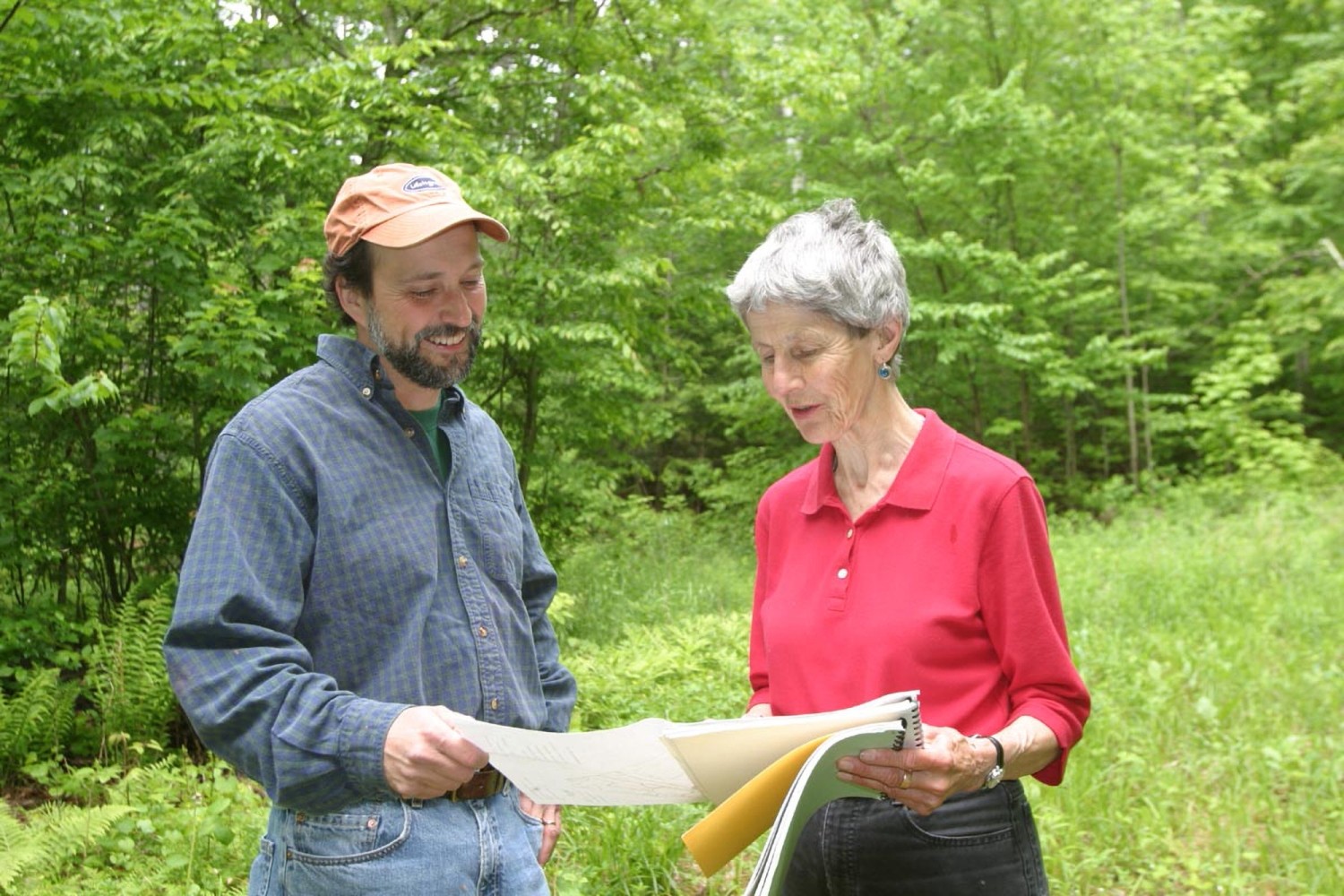
I just bought a parcel of forestland and I don’t know where to start. Do I need a forester?
Even for people who have owned a parcel of forestland for a long time, caring for a forest can be intimidating. Whether your goal is to manage your forest for songbird habitat, climate resilience, fish and game, carbon, sustainable timber production – or anything else – you probably need a forester.
While there are several different kinds of foresters, there are two main types that most forest landowners should know about. The first are service foresters (although in some states, they have other titles: county foresters in Vermont and New Hampshire, district foresters in Maine, and stewardship foresters in New York). Service foresters work for state agencies and are often available to provide free advice and technical support to landowners. When you’re not sure what to do, calling your local service forester and asking them to join you for a walk in your woods can be a great first step.
The second kind of foresters are consulting foresters. A consulting forester is a private forester who works for landowners and will ultimately be “your forester” – the one who will help you achieve your forest management objectives. In my view, a good consulting forester works both for landowners and for the forest itself; their job is both to help interpret and carry out landowners’ objectives and also to help landowners understand how these objectives fit (or may not fit) within the context of a healthy forest. Different foresters have different strengths, specialties, and values, so it’s important to have a conversation with any prospective consulting forester (or several foresters) to make sure you find one who is the best fit for you.
Once you’ve chosen a consulting forester, the next step is often to have them write a forest management plan. In this plan, your forester assesses the health and condition of your forestland; maps it into different “stands” based on forest composition, structure, management history, access considerations, and more; details any special ecological or cultural features; and may prescribe management actions (also called silvicultural treatments), usually during a 10-year timeframe. While there is always something you could do to care for your forest, there may be decades between major forest management activities, so not every forest management plan will include a silvicultural treatment.
If your plan prescribes a treatment, your consulting forester can make sure this work is carried out responsibly. Your forester will find a logger who has the right skills and equipment for your forest; draft a contract between you and the logger that defines what the logger’s responsibilities are, releases you from liability, and dictates how the logger will pay you for the wood they cut; mark the trees to be cut, as well as the locations of access trails and stream crossings; and then supervise the logger to ensure they’re fulfilling the terms of their contract and following best practices. At the end of the job, the forester will make sure the logger stabilizes (“closes out”) roads and trails and leaves your forest in good shape.
Keep in mind that forest management is a collaborative process that requires good communication and shared learning.
As a landowner, you are the boss: it’s your job to find a forester who is right for you and to make sure you have clearly expressed your objectives and expectations. However, it is also important to be open to input from your forester and to be willing to change expectations as you learn more about your forest and what’s necessary to care for it.
Forest stewardship can be challenging, but the good news is that you don’t have do it alone – a forester can help you implement your objectives while also protecting your forest’s long-term health and resilience.

